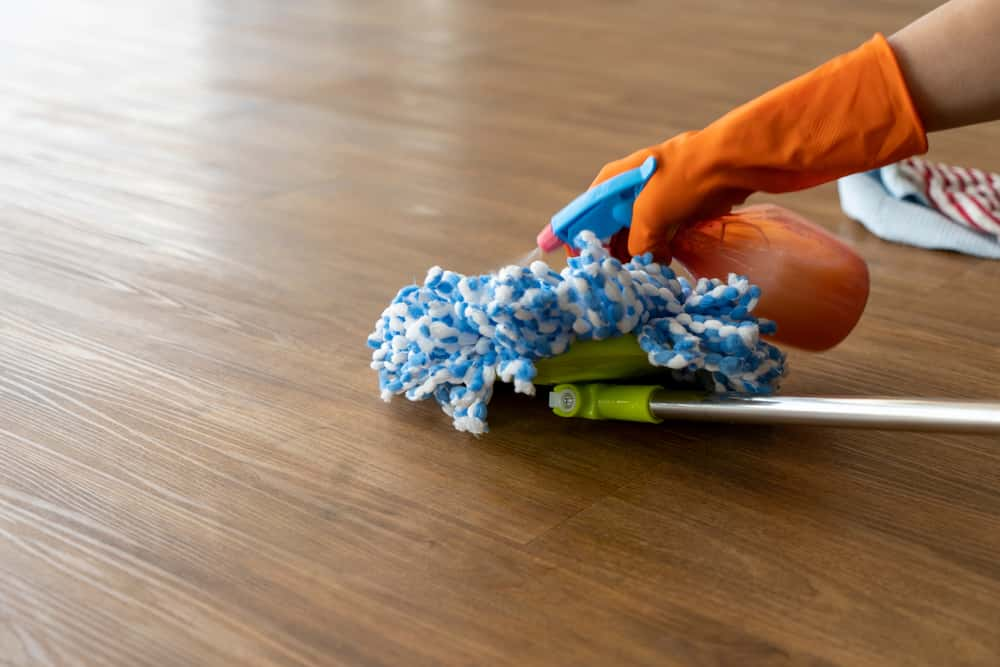Are you looking for flooring ideas for your home transformation? Vinyl flooring, a popular option during the 80s and 90s, is making a comeback, and how! Now available in a wide variety of innovative designs and patterns, vinyl mimics the warmth of wood, the patterns of ceramic tiles and the texture of stone at a fraction of the price.
We bring you the lowdown on this flooring material. How is vinyl flooring manufactured, and how is it laid? What is it that has made vinyl take centre stage in the home décor market yet again? Read on to know more!

How is Vinyl Flooring Manufactured?
Polyvinyl chloride (PVC) tiles or sheets are made from polyvinyl chloride; a plastic material that is obtained by the process of polymerisation of carbon, hydrogen and chlorine. It contains an added layer that is imprinted with patterns and textures, giving it additional hardness and durability and also making it look similar to stone, ceramic or wood finishes.
Availability of Vinyl Flooring
Vinyl flooring is available as rolls of 12 feet width, or in the form of rectangular planks or square tiles. Planks, usually in the form of hardwood lookalike finishes, come with a foam centre that adds strength and makes it rigid. Vinyl tiles are available in a wide range of patterns and finishes that look like stone or ceramic.

Advantages of Vinyl Flooring
There are a lot of advantages that make this flooring material such a popular option.
• Vinyl is completely water resistant, and can be even used in the bathroom and kitchen area.
• When properly installed, vinyl floors will last at least for 10 to 20 years. If an individual tile is damaged it can be very easily replaced.
• Vinyl sheets allow for a seamless floor in the kitchen or bathroom, making for very quick installation. As there are no joints, this sheet floor is very easy to keep clean and is hygienic as well.
• PVC floors give a cushioned feel underfoot and stay cool and comfortable in all kinds of weather.
• Just a quick wipe down with water is enough to keep your vinyl floor clean. It is stain-resistant and does not absorb oil or any liquid, making it virtually maintenance free.
• Vinyl floors are slip resistant.
• These floors are available in a staggering array of prints, colours, patterns and textures. You can choose vinyl flooring options that closely resembles wood, stone, decorative tile and even concrete.
• Vinyl flooring sheets, planks and tiles are among the most cost-effective flooring material options in the market.
• Textured vinyl options add visual as well as tactile interest.

Disadvantages of Vinyl Flooring
• Vinyl is not an environmentally friendly option, as it is not biodegradable; neither can it be easily recycled. Old vinyl floors end up in landfills.
• It is manufactured using chemicals that could leach out VOCs (volatile organic compounds), which might cause eye irritation or respiratory issues in the long run.
• The floor substrate should be perfectly smooth before laying, or uneven bulges will be formed.
• Vinyl floors can get scratched or dented while moving furniture around. If you are using a sheet and it gets damaged, it cannot be repaired. However, vinyl planks and tiles can easily be replaced.
• When exposed to bright sunlight over a long time, the colours can fade.
• If there is moisture between the vinyl and the floor below, it can cause mold to grow. Over time, this will give out a very unpleasant odour.
How Can Vinyl Flooring Be Maintained?
Vinyl is one of the most fuss-free flooring options you could ever find. It can be swept free of dust with a broom, vacuumed or mopped with water or non-toxic mild cleaners to keep it looking as good as new for many years.

How is Vinyl Flooring Laid?
Vinyl planks and tiles are usually fitted with a tongue-and-groove interlocking system, right over your existing floor. This material does not require bonding to the floor below and is held together edge-to-edge very easily. The flooring for an entire bedroom can be laid in just a few hours. It can also be dismantled just as easily.
Vinyl sheets are also laid very quickly, but you might require a professional to do this for you as it involves installing an underlay and gluing the sheet onto the subfloor. If you are not careful while doing this, the flooring will appear uneven and could have bubbles.

Ready to Make Your Flooring Choices? Here Are Some Tips to Help You Get It Right!
Tip #1. If your room is small, pick light, neutral colours. Too much colour or pattern in a small space will make it appear cramped.
Tip #2. Pick the material based on the usage and expected foot traffic. For instance, foyers and kitchens might see a lot of rough usage, so opt for durable flooring options that can withstand considerable wear and tear.
Tip #3. Do not allow moisture to be retained on the surface of the flooring. Wipe up spills quickly.
Tip #4. If there is direct sunlight on one part of the floor, cover it with an area rug so that the colours and patterns don’t fade over time.
Tip #5. Be kind to your floors! Don’t allow heavy furniture to be moved around a lot, and do make sure that your floors are protected from sharp edges or objects.
Need help finalising your home interior designs? Visit HomeLane. Our designers have the expertise you need!







